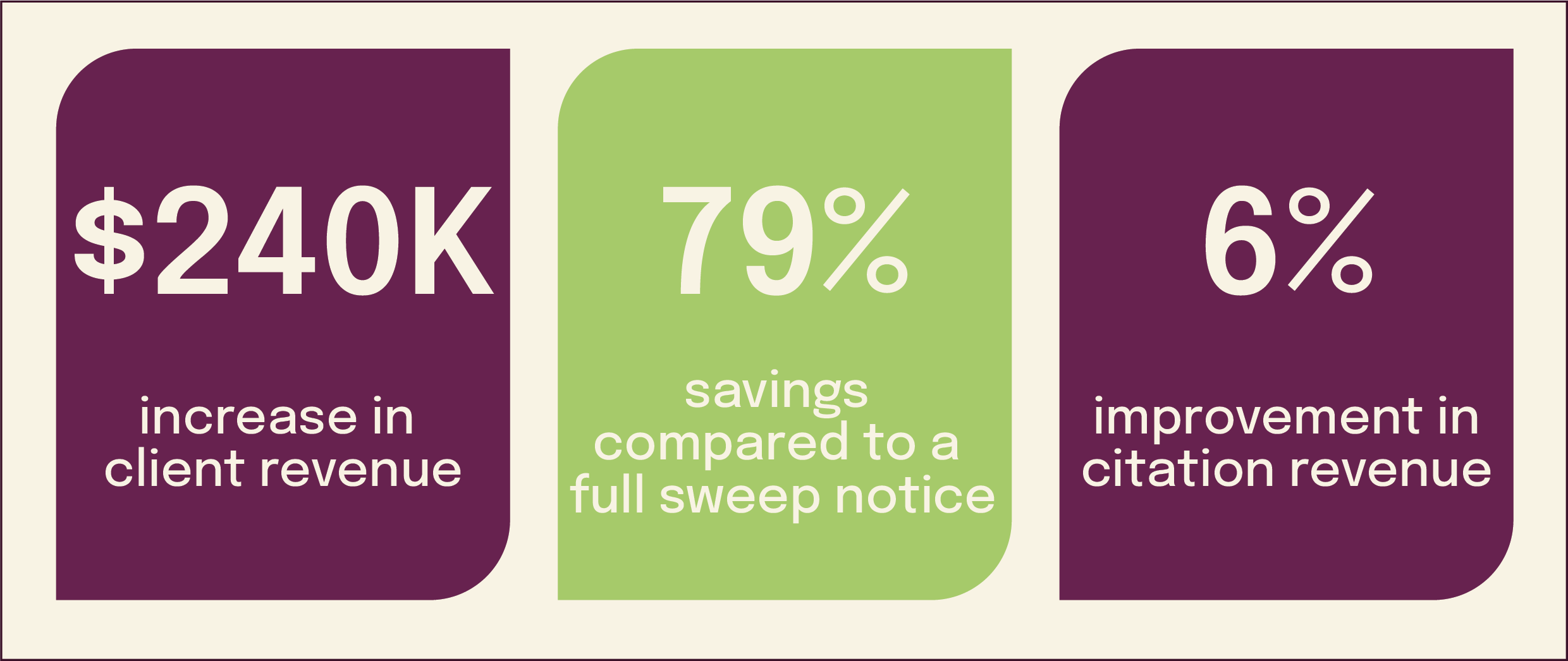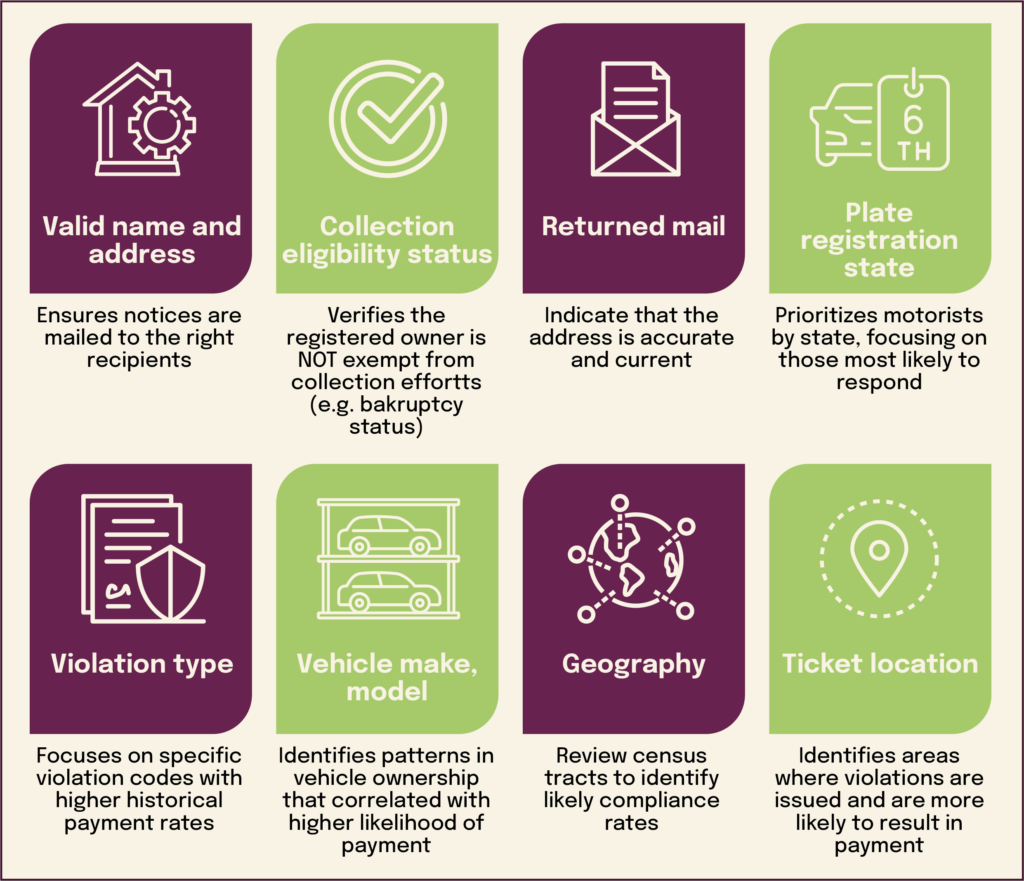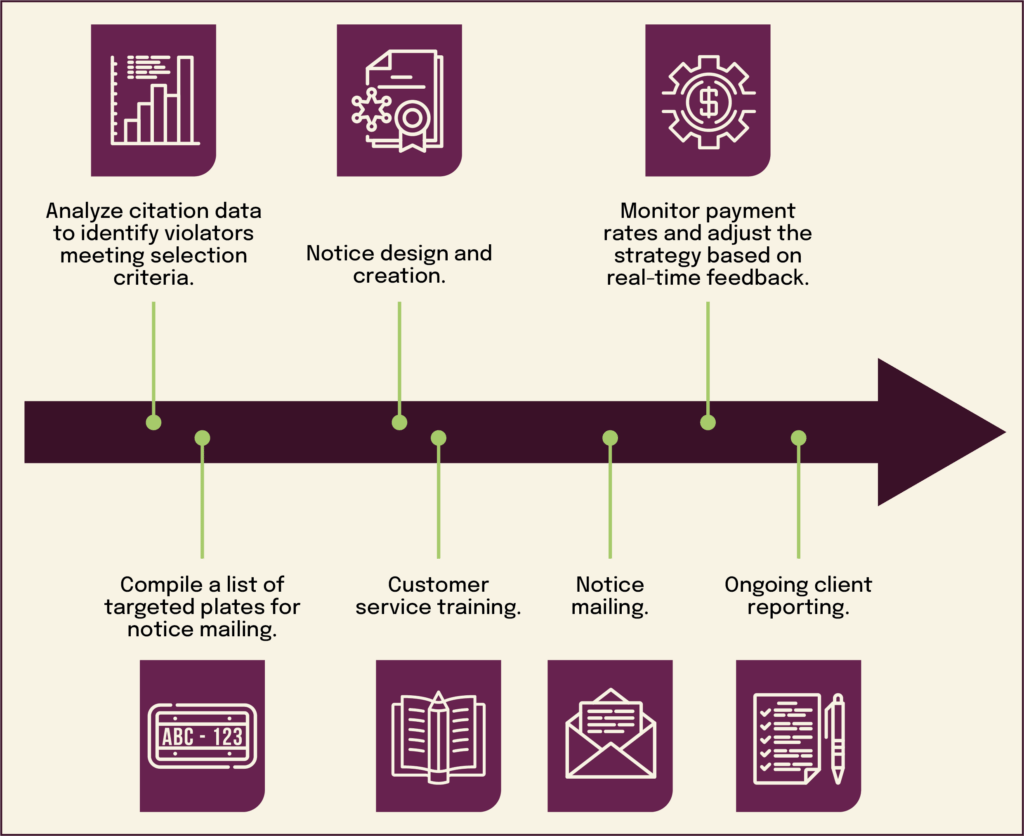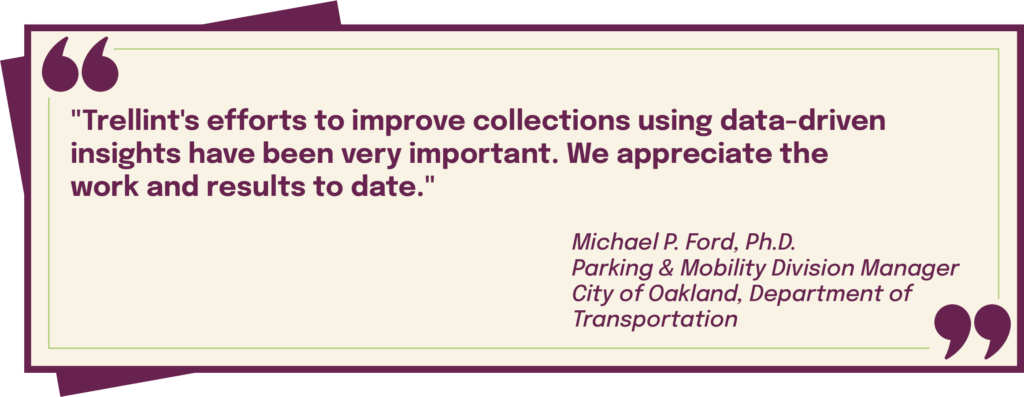3 min read
Case Study: Boosting City Parking Revenues in Oakland through Targeted Citation Notification Programs
Mary Martin Jan 7, 2025 12:00:00 AM

Our innovative, data-driven strategy boosts city parking citation revenue by targeting violators with the highest propensity to pay, using customized notices and informed timing. This limited-run program enhances collection efficiency while minimizing additional costs, delivering a strong return on investment.

Parking citation collection is a critical source of revenue for municipalities, yet many cities struggle with unpaid fines. Traditional methods often involve sending standard notices to violators, with limited external collection efforts, such as DMV holds or tax offsets. Despite these efforts, a significant portion of citations remains unpaid.
Background
Our team identified an opportunity to enhance revenue generation in Oakland through the implementation of a targeted, limited-run noticing program aimed specifically at violators with a high likelihood of paying. By leveraging data-driven insights and strategic seasonal timing, we can boost response rates and significantly improve parking revenue collection without additional reliance on costly external collection efforts.
We engaged the City of Oakland to demonstrate the power of data in shaping improved collections.
The City’s goal was to increase the parking citation revenue, and Trellint suggested reaching out to the subset of violators most likely to pay through customized notices tailored to their profiles. Our aim was to achieve a significant uptick in payments while minimizing collection costs.
Our Strategic Approach
To increase the efficiency of the noticing program, we used data-driven criteria to identify violators with the highest likelihood of paying. Key factors included:

Using statistical modeling methods, we weighed and then scored each violation, prioritizing the most collectible above others. We identified five behavioral groups, each with varying predictive payment probabilities.
These groupings provided insights whether we should either regenerate and mail an existing notice type, potentially adding an insert with additional instructions, or create a new notice, customized by violator class. In this case, we created a new notice that clearly stated the amounts owed, provided easy-to-understand instructions, and incentivized payment through a “call to action” (like avoiding further penalties or debt referral to a collection agency).
In addition, the timing of notices can be optimized based on historical data. There are certain periods when collections will generally be higher (like tax refund periods) and other times when payments are less likely (in the days leading up to Christmas). Every city is different when it comes to these trends, and by aligning notice cycles with anticipated peak payment rates, cities can further improve the yield per notice mailed.
The work doesn’t end once the notices are mailed to violators. We tracked payments closely to measure payment rates and provided reports to the City of Oakland. Maintaining clear communication with the client throughout the process was critical. We will continue to monitor the program’s performance and make continuous adjustments to optimize revenues and client success.

We mitigated risk by employing several strategies:
- A dedicated customer service team was trained to handle inquiries effectively, ensuring violators had access to clear instructions on how to contest or pay fines was a key component of the strategy.
- We placed significant emphasis on updating and verifying our data sources regularly to ensure the notices were sent to valid addresses.
- The team received the requisite legal reviews and client approvals of the new collections notice.
- A dedicated customer service team was trained to handle inquiries effectively, ensuring violators had access to clear instructions on how to contest or pay fines was a key component of the strategy.
Benefits
Oakland’s strategy generated an additional $240K+ in revenue over three months, a 16% improvement in collections revenue and a 6% increase in citation revenue overall. Further, by focusing notices on violators most likely to pay, we were able to reduce noticing costs by 79%.
The program is a model for:
- Increased Payment Rates. Violators identified through the targeted noticing program exhibited significantly higher payment rates compared to those who received standard notices.
- Revenue Growth. Oakland experienced a marked increase in parking citation revenues during the targeted seasonal months, aligning with the projected impact of the strategy.
- Cost Efficiency. By focusing efforts on violators with the highest propensity to pay, the city increased the yield per notice and realized a higher return on investment for the program.

Conclusion: A Call to Action.
This targeted, limited-run noticing program proved highly effective in boosting parking citation revenues while encouraging compliance with local laws and minimizing costs. By leveraging data-driven insights, the team successfully identified violators with a high likelihood of paying and ensured the program ran smoothly through effective planning, clear communication, and robust risk management measures.
If you’re looking to boost parking citation collections, reduce noticing costs, and increase overall revenue for your city, Trellint’s data-driven, targeted noticing solutions can help. We’d love to explore how we can support your municipality’s goals.
Contact us today to learn more about how Trellint can help optimize your parking citation programs. Whether you’re looking to implement a similar strategy or need a tailored solution, we’re here to help you achieve greater efficiency and revenue growth.





